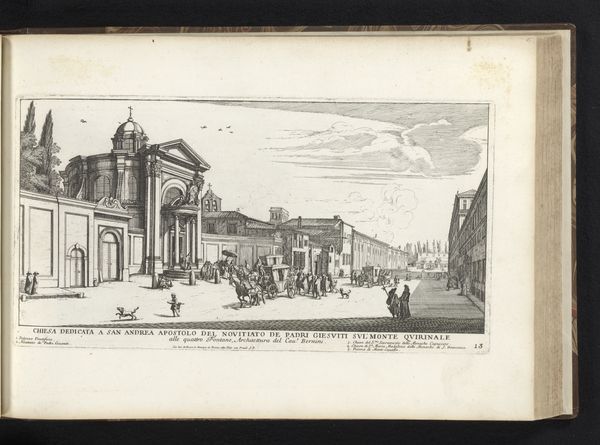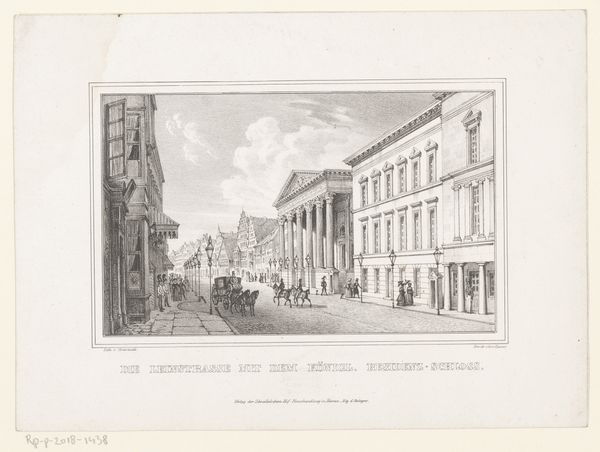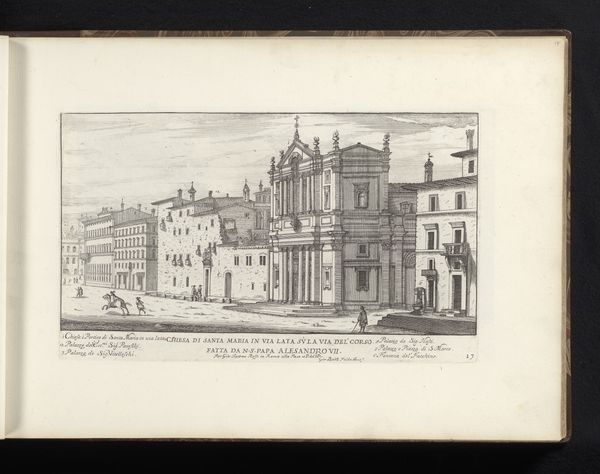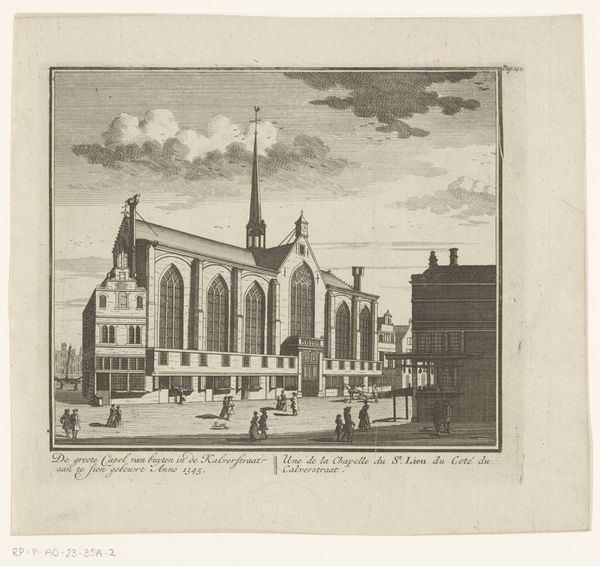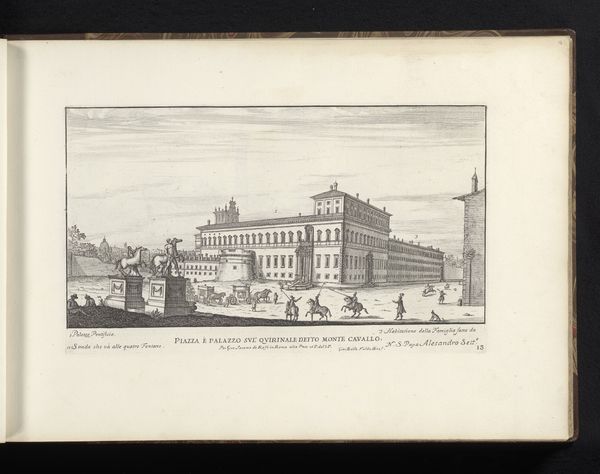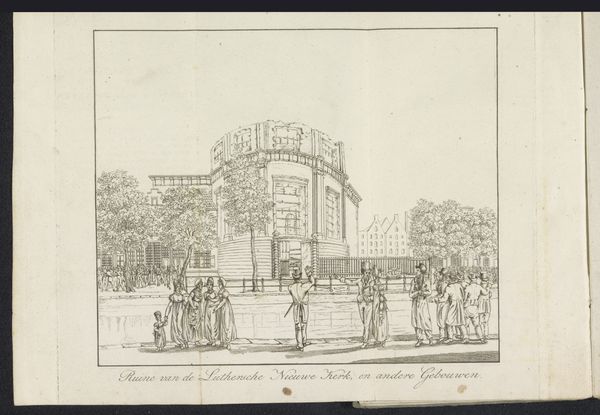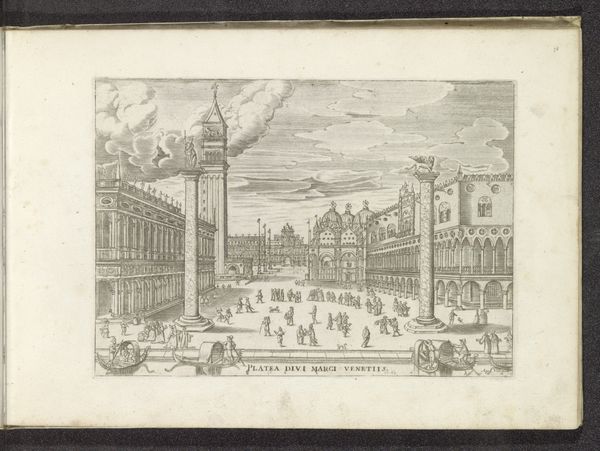
Ruïne van de Nieuwe Lutherse Kerk te Amsterdam na de brand in 1822, vanaf de Stromarkt 1822 - 1823
0:00
0:00
anonymous
Rijksmuseum
drawing, print, etching, ink
#
drawing
# print
#
etching
#
landscape
#
ink
#
romanticism
#
cityscape
#
history-painting
Dimensions: height 227 mm, width 320 mm
Copyright: Rijks Museum: Open Domain
Curator: Well, isn’t this a sobering sight? The work, whose title translates to “Ruins of the New Lutheran Church in Amsterdam after the fire in 1822, seen from the Stromarkt,” made between 1822 and 1823, gives us a snapshot of devastation. Editor: Haunting, yes. At first glance, I felt this quiet dread, this muted shock of a community staring at absence. It’s almost clinically rendered in the etching and ink, distancing us from the chaos, while quietly implicating us as witnesses. Curator: The print certainly captures a pivotal historical moment. The fire, of course, would have had a profound social and psychological impact on the community. Seeing the crowd gathered there, we glimpse how disaster binds and shapes identity, reshaping sacred space and testing belief. Editor: I can see that, how trauma imprints itself onto a cityscape. But is it just me, or is there something oddly...stagey about the arrangement? The characters almost seem posed, and the building itself, while obviously damaged, maintains a certain stoic grandeur, creating an eerie dance between destruction and composure. Curator: The anonymous artist was likely trying to capture a factual record while simultaneously conveying a moral message about resilience or perhaps divine judgment. Romanticism frequently employs ruins as symbols of mortality and the fleeting nature of earthly achievement. The contrast between the relatively untouched buildings surrounding the ruin with those who assess the tragedy amplifies these thematic layers. Editor: Ah, now I’m tracking with that interpretation. The landscape echoes the internal state. All the precise lines and angles become a network of fragility. It's less about the event itself and more about the before and after. This tension gives it staying power, a quiet rumination. Curator: Precisely, an enduring study of loss etched in meticulous detail. I find this print offers a way to understand not just Amsterdam’s history, but our shared humanity and the power of symbols to document history. Editor: I couldn't agree more. Looking again, this piece really demonstrates the odd power of art, how even through ruins, beauty and resilience can strangely prevail.
Comments
No comments
Be the first to comment and join the conversation on the ultimate creative platform.

